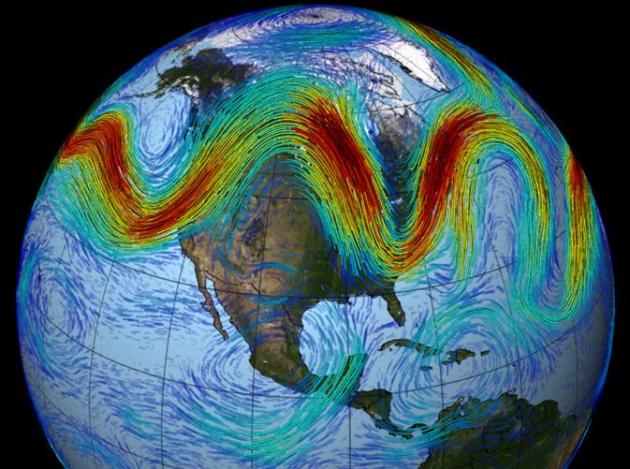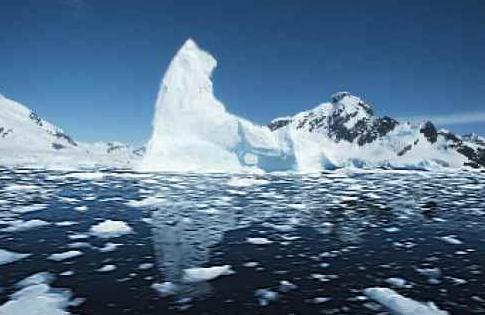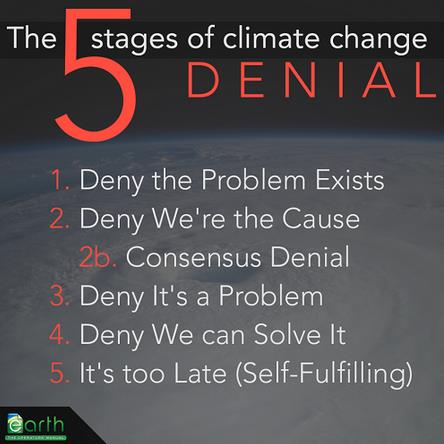
A Goldilocks Spring? Don’t Count On It
On Wednesday I talked about weather and climate trends with RPMG, a company focused on ethanol production across the Midwest. One gentleman raised his hand with a good question. “Paul, what’s your forecast for this summer?” My answer, after much consideration: CHANGEABLE.
To even attempt to go into specifics would betray the state of the science. Meteorologists can predict with some skill (more than 50/50) out about 2 weeks. Beyond that we only predict broad trends.
Will this be a Goldilocks Spring? Most springs it’s either too wet or too dry. NOAA’s climate division predicts April through June temperatures close to average, with a wet bias for Minnesota and the Upper Midwest. Considering recent springs have been (much) wetter that’s hardly a shocker.
Some slush brushes far southwest Minnesota with 2-4 inches near Worthington but dry weather prevail elsewhere into the weekend. Metro temperatures brush 50F Saturday and Sunday before cooling off.
60F isn’t out of the question late next week; maybe a rumble of thunder one week from Saturday. Spring is coming! I mean it this time.
Flashes of Spring. It will start to feel like spring this upcoming weekend with afternoon highs near 50F both days, 5-10F milder than average. Another surge of warmth arrives late next week, when mid-50s are possible. The more snow we melt the higher the mercury can go. Twin Cities ECMWF numbers: WeatherBell.
Snowfall Trends. Thanks to Brian Brettschneider for sharing this graphic, showing (net) increases or decreases in annual snowfall in the last 30 years. There’s a fairly dramatic decrease in winter snow from Wichita Falls and Little Rock to Nashville and Norfolk. Closer to home nowfall has actually increased over western Minnesota, but fallen from near St. Cloud to the Twin Cities and Mankato.
Updated Flood Threat. Here’s an excerpt from NOAA’s just-released Spring Outlook: “…Through May, moderate flooding is likely in the lower Mississippi Valley, parts of the Ohio River Basin, the Illinois River Basin, and in parts of the lower Missouri River Basin. Minor flooding is possible in parts of the Columbia River and upper Missouri River Basin as above-normal snowpack in the Northern Rockies melts. The flood risk outlook is based on a number of factors, including current conditions of snowpack, drought, soil moisture, frost depth, streamflow and precipitation. Local heavy rainfall, especially associated with thunderstorms, can occur throughout the spring and lead to flooding even in areas where overall risk is considered low...”
Map credit: “2018 U.S. Spring Flood Outlook: This map depicts the locations where there is a greater than 50 percent chance of moderate or minor flooding during March through May, 2018.” (NOAA).
Signs of Spring from Minnesota DNR. If there was any doubt in your mind that spring is coming, details and dates from the MN DNR: “One of the first signs of spring have arrived in 2018. The songs of the first red-winged blackbirds of the season were heard in north Maplewood on Thursday, March 8, six days earlier than the median date of March 14…According to the National Phenology Network, spring is about a week ahead of average for 2018 so far, nationwide…. ”
Photo credit: Star Tribune, Audubon Society.
A Shot at the Northern Lights? There’s no way to predict, in advance, with a high level of confidence, but the Aurora Borealis will be visible across much of Canada, and with clear skies and a new moon Minnesota has a better than average shot at seeing a display this week. Details via the University of Alaska, Fairbanks: “Auroral activity will be active. Weather permitting, active auroral displays will be visible overhead from Inuvik, Yellowknife, Rankin and Iqaluit to Juneau, Edmonton, Winnipeg and Sept-Iles, and visible low on the horizon from Vancouver, Great Falls, Pierre, Madison, Lansing, Ottawa, Portland and St. Johns.”
Grading the March 5, 2018 Winter Storm. I think it’s pretty cool that the local National Weather Service is evaluating and grading their performance, on a storm-by-storm basis. Here’s an excerpt from the last big storm: “This was a tough system to forecast. A potent area of low pressure occluded over the Missouri Valley and then slowly dropped southeast away from the area. Rain, snow, and sleet showers, and even a few thunderstorms pushed across the area during the evening of March 4th and during the early morning hours of March 5th. As the event closed in, it became more apparent the system was going to occlude a little further west than previously anticipated, which resulted in a delay in the heavy snow across eastern Minnesota into western Wisconsin. This also meant temperatures were colder further south and west, allowing the expected rain across southern and western Minnesota to turn over to snow many hours sooner than predicted...”
Warm Arctic? Expect Northeast Blizzards. What 7 Decades of Weather Records Show. InsideClimate News has a summary of recent research attempting to connect the dots: “The warmer the Arctic, the more likely the Northeast will be clobbered by blizzards, says a team of researchers who analyzed winter weather patterns going back to 1950. Citing disruptive storms like Snowzilla (2016), Snowmaggedon (2010) and Snowpocalypse (2009), the climate scientists wrote that “heavy snowfalls are generally more frequent since 1990, and in many cities the most extreme snowfalls have occurred primarily during recent decades.” Their study, published in the journal Nature Communications, links the increased frequency of extreme winter storms with the rapid and persistent warming of the Arctic since around 1990. When temperatures over the Arctic spike, especially high in the atmosphere, extreme winter weather is two to four times more likely in Boston and New York, while the U.S. West tends to see warmer and drier conditions, they conclude…”
Research Paper. The study referenced above can be found here, courtesy of nature.com: “…As the Arctic transitions from a relatively cold state to a warmer one, the frequency of severe winter weather in mid-latitudes increases through the transition. However, this relationship is strongest in the eastern US and mixed to even opposite along the western US. We also show that during mid-winter to late-winter of recent decades, when the Arctic warming trend is greatest and extends into the upper troposphere and lower stratosphere, severe winter weather—including both cold spells and heavy snows—became more frequent in the eastern United States.”

Intense Winter Storms & a Warming Arctic: From Climate Nexus: “Extreme winter weather in the eastern United States could be linked to a warming Arctic, a new study has found. Research published Tuesday in the journal Nature Communications analyzed winter weather patterns from 1950 onwards, finding that extreme winter weather in the East and Midwest states is up to four times more likely in years with warmer Arctic temperatures since 1990. “There’s a remarkably strong correlation between a warm Arctic and cold winter weather further south,” co-author Judah Cohen told the Guardian. “It’s a complex story – global warming is contributing to milder temperatures but is also having unforeseen consequences such as this.” (The Guardian, CNN, USA Today, The Verge, InsideClimate News, LA Times $, Popular Science, Ars Technica, Wired)
Please Stop Building Houses Exactly Where Wildfires Start. Who doesn’t want to live near a forest, right? Except in the west that desire can prove dangerous, even deadly, as WIRED.com reports: “…According to a new analysis of housing in the WUI, the trend goes up and to the right. According to Census data, between 1990 and 2010 in the continental US, the WUI grew from 224,325 square miles to 297,299 square miles. The number of new houses grew there, too—by 12.6 million. The big quote from the paper: “Even though the WUI occupies less than one tenth of the land area of the conterminous United States, 43 percent of all new houses were built there...”
Map credit: “The Wildland-Urban Interface got smaller in the western US, but the number of houses and people in it went up.” Radeloff et al./SILVIS Lab/University of Wisconsin-Madison.
Wildfire Risk Rises with 43 Million U.S. Homes Near Vulnerable Areas. A story at USA TODAY provides more perspective: “…Overall, as of 2010, some 43 million homes were located in what scientists call the “wildland-urban interface,” defined as the area where residential homes are built on or near wildland vegetation, such as trees and shrubs. Twenty years earlier, 31 million homes were located in those areas for a whopping increase of 41%. Last year was a particularly destructive and costly year for wildfires, with 10 million acres burned and a record $2 billion to fight the blazes. Five of California’s 20 worst wildfires on record scorched the state in 2017. When combined with the threat of global warming, Americans choosing to live near forests is expected to lead to more severe wildfire seasons...”
Photo credit: “Flames from a wildfire consume a residence near Oroville, Calif., on July 9, 2017.” (Photo: Noah Berger, AP).
In Virginia, Black Clergy Lead Charge Against Fossil Fuel Lobby: From Climate Nexus: “Black communities in Virginia, led in large part by faith leaders, are galvanizing against fossil fuel lobby messaging specifically targeted to them, according to a new report from Grist. A Koch-funded gospel concert to surreptitiously promote oil and gas held in Richmond in 2016 generated significant backlash in the community, activists say–and encouraged many community members and faith leaders to reconsider how the fossil fuel industry targets and exploits black Americans. “God didn’t put me on this earth to pimp death for profit,” Rev. Paul Wilson, who took up arms against environmental racism after the concert and was recently arrested protesting the Atlantic Coast Pipeline, told Grist. “That’s what the Kochs and these energy folks are doing to my people now. It’s up to us in the church to stop it.” (Grist)
Healthiest County in Minnesota? Take a bow, Carver County. According to County Health Rankings and Roadmaps you are the healthiest county in the great state of Minnesota. Click on your county to get more details. Hennepin County is 38th, Ramsey County is 64th healthiest.
The Quest to Bring 3-D Printed Homes to the Developing World. WIRED.com has the remarkable story; here’s a snippet: “…About a year ago, the company wondered if there was a better way to build. In the three years since it launched, New Story had gathered the funding to construct 1,300 homes and had completed 850 of them—but that felt like a drop in a bucket. “There are over 100 million people living in slum conditions in what we call survival mode,” says Alexandria Lafci, New Story’s cofounder and COO. “How can we make a big dent in this instead of just solving incrementally?” The idea they landed on: 3-D printing...”
Image credit: New Story.
A Start-up is Pitching a Mind Uploading Service That is “100 Percent Fatal”. Lovely. And people will pay big money to do this. Here’s an excerpt from MIT Technology Review: “…There’s never been anything quite like Nectome, though. Next week, at YC’s “demo days,” Nectome’s cofounder, Robert McIntyre, is going to describe his technology for exquisitely preserving brains in microscopic detail using a high-tech embalming process. Then the MIT graduate will make his business pitch. As it says on his website: “What if we told you we could back up your mind?” So yeah. Nectome is a preserve-your-brain-and-upload-it company. Its chemical solution can keep a body intact for hundreds of years, maybe thousands, as a statue of frozen glass. The idea is that someday in the future scientists will scan your bricked brain and turn it into a computer simulation. That way, someone a lot like you, though not exactly you, will smell the flowers again in a data server somewhere. This story has a grisly twist, though…”
Image credit: “Layers of cells and synapses of a preserved pig brain as seen through an electron microscope. Some believe mapping such a “connectome” could be used to reconstruct memories.” The Brain Preservation Foundation.

Bose is Working on Smart Sunglasses – Augmented Reality For Your Ears. Quartz has the details on promising new tech: “The audio company, once known for the ubiquitous Wave Radios seen on countless infomercials, and now for high-quality headphones, is moving into augmented reality. But its interpretation of the technology—which we’ve seen in rudimentary forms in things like Pokémon Go and Apple’s ARKit—is wildly different. Instead of using mobile devices to overlay visual information in front of our eyes, Bose is exploring how sound can be used to augment our lives…The glasses can also provide directions to the wearer, using stereo sound: If you’re turning left, the voice chimes in on the left ear, and on the right if you’re turning that way. Bose said it’s looking at using this technology in other form factors, like embedding it in a bike helmet to keep riders aware of the world around them as they bike, but provide them with useful information, like directions…”
Image credit: “Bose’s prototype glasses.” (Bose).
Unplugging from the Internet Nearly Destroyed Me. I like the idea of tapering, but totally disconnecting from The Matrix? Good luck with that. A link to a harrowing story at The Atlantic is here.
Finland is the World’s Happiest Country. Here’s an excerpt from CNN: “…The United States landed in 18th place, dropping four spots from last year. “Governments are increasingly using indicators of happiness to inform their policy-making decisions,” said economics professor Jeffrey D. Sachs, director of Columbia University’s Center for Sustainable Development and report co-editor. “US policymakers should take note. The US happiness ranking is falling, in part because of the ongoing epidemics of obesity, substance abuse and untreated depression.” Other major powers didn’t crack the top 10 rankings, either. Germany came in 15th place, while the United Kingdom was 19th. Japan came in 54th place, Russia came in 59th place and China came in 86th…”
“If we must disagree, let’s disagree without being disagreeable.” – Lyndon Baines Johnson
39 F. high yesterday in the Twin Cities.
41 F. average high on March 15.
32 F. high on March 15, 2017.
March 16, 1930: The temperature at the Minneapolis-St. Paul International Airport tops out at a record 71 degrees.
FRIDAY: Plenty of sunshine.Winds: E 7-12. High: 42
FRIDAY NIGHT: Clear to partly cloudy. Low: 25
SATURDAY: Mild sun. Vague hints of April. Winds: SE 3-8. High: 49
SUNDAY: Partly sunny – few complaints. Wake-up: 33. High: near 50
MONDAY: Mostly cloudy, average temperatures. Winds: E 5-10. Wake-up: 34. High: 42
TUESDAY: Light mix possible. Mainly wet roads. Winds: SE 5-10. Wake-up: 29. High: 38
WEDNESDAY: More clouds than sun, drier. Winds: NW 7-12. Wake-up: 24. High: 42
THURSDAY: Sunny and milder. Winds: S 8-13. Wake-up: 27. High: near 50.
Climate Stories…
Weathering Trump’s Skepticism, U.S. Officials Still Fighting Global Warming. Here’s an excerpt from Reuters: “…But there is a disconnect between what Trump says at home and what his government does abroad. While attention has been focused on Trump’s rhetoric, State Department envoys, federal agencies, and government scientists remain active participants in international efforts to both research and fight climate change, according to U.S. and foreign representatives involved in those efforts. “We really don’t detect any change with the Americans,” said one of the officials, Aleksi Härkönen of Finland, who chairs the eight-nation Arctic Council’s key group of senior officials, who are charged with protecting a region warming faster than any other on Earth. Over the past year, the United States has helped draft the rulebook for implementing the Paris climate accord, signed international memoranda calling for global action to fight climate change, boosted funding for overseas clean energy projects, and contributed to global research on the dangers and causes of the Earth’s warming…”

CLIMATE IMPACTS: More headlines and links via Climate Nexus: “The fast-melting Arctic is already messing with the ocean’s circulation, scientists say (Washington Post $), summer daze: hot season will be two months longer in eastern Mediterranean by 2100, study says (USA Today), Easter Island is eroding (New York Times $), coral reefs at severe risk as world’s oceans become more acidic (USA Today), this is what a West without water will look like.” (Mother Jones).
Biofuels Can Help Solve Climate Change, Especially With a Carbon Tax. So says Dr. John Abraham at The University of St. Thomas, writing for The Guardian: “…The term “biofuels” has many meanings, but basically they are grown fuels (like corn ethanol) that we can use instead of fossil fuels (like petroleum). While biofuels can be any fuel produced from plant material, historically they have been produced from food crops such as corn and soy. But, new technologies are enabling biofuel production from non-edible gases, wood, and other plant waste material. The beauty of biofuels is that they suck carbon dioxide out of the air as they grow. When we burn them in our automobiles, we release carbon dioxide, but it is the same carbon that the plants absorbed while growing. Just on that basis, biofuels appear to be zero net emitters…”
Photo credit: “Willow trees grown for biofuel next to a biofuel power station in Lockerbie, Scotland, UK.” Photograph: Ashley Cooper / Alamy/Alamy.
Schwarzenegger Wants to Sue Big Oil for Climage Change. Does He Have a Case? Plenty of money for the lawyers in all of this. Here’s a clip from a story at Climate Liability News: “Former California governor Arnold Schwarzenegger said he wants to sue oil companies for first-degree murder, a move that will focus the public’s attention on their role in climate change but one that will face considerable hurdles in court. Schwarzenegger, speaking at South by Southwest (SXSW) at an event hosted by Politico, said he had been talking to law firms about suing Big Oil producers because they knew about the public health risks of climate change and should pay for the costs. “We’re going to go after them, and we’re going to be in there like an Alabama tick. Because to me it’s absolutely irresponsible to know that your product is killing people and not have a warning label on it, like tobacco,” he said during the live podcast on Sunday…”

Fear, Fun or Facts? Researchers Look at What Drives Climate Action. Here’s a snippet from another post at Reuters that caught my eye: “…The more matter-of-fact weatherman most successfully helped participants understand the reasons behind climate changes, according to study participants. But humor was most effective in inspiring people aged 18-24 to take action themselves against climate change, such as joining rallies and volunteering for organizations, Niederdeppe said. Nonetheless, it was fear that most motivated a desire for broad action on climate change, prompting watchers to say they would contact officials to see if they supported environmentally friendly policies, the study said. That was true across all the age groups surveyed, he said, not just 18-24-year-olds. After looking at the results, the researchers now aim to try delivering climate change information with a satirical bite to see if it produces even greater drive for action among viewers, Niederdeppe said…”
Why I Am a 16-Year-Old Climate Activist. Check out the post at Refinery29; here’s the intro: “I am a 16-year-old climate activist. Our movement is unstoppable. Young people have had enough. Students dominating the news cycles right now have had enough of living with gun violence. We are tired of waiting for adults to take action on the problems that are threatening our lives: The end of gun violence, racism, and climate denial are far past due. So now the young people like me are stepping up to make sure adults stop wasting precious time and start actually working to resolve these persistent challenges. I started taking action in my home state, joining 12 other young people in Washington filing a constitutional climate action lawsuit against the state, Gov. Jay Inslee, and several state agencies in King County Court for their refusal to take sufficient climate action…”
Photo courtesy of Jamie Margolin.
World’s Great Forests Could Lose Half of All Wildlife as Planet Warms. The Guardian reports: “The world’s greatest forests could lose more than half of their plant species by the end of the century unless nations ramp up efforts to tackle climate change, according to a new report on the impacts of global warming on biodiversity hotspots. Mammals, amphibians, reptiles and birds are also likely to disappear on a catastrophic scale in the Amazon and other naturally rich ecosysterms in Africa, Asia, North America and Australia if temperatures rise by more than 1.5C, concludes the study by WWF, the University of East Anglia and the James Cook University…”
Photo credit: “Wildlife is likely to disappear on a catastrophic scale in the Amazon if temperatures rise by more than 1.5C, the report warns.” Photograph: Daniel Beltra/Daniel Beltra for Greenpeace.
With the EPA AWOL, Minnesota Cities Prepare for Climate Change Alone. Here’s an excerpt from City Pages: “…Across the state, cities are readying themselves for the dangers of climate change and working to shrink their carbon footprints. But making a city more resilient is costly, and efforts to reduce emissions can seem paltry compared to the scale of the problem they’re trying to solve. Climate change is expected to increase the frequency and intensity of rainfall in Minnesota, bringing with it a greater risk of flash flooding that threatens cities whose current infrastructure has never weathered a 100- or 500-year flood. Since 2000, the state has had eight “mega-rain events,” when at least six inches of rain fell in an area greater than 1,000 square miles, according to the Minnesota Department of Natural Resources. There were only three in the 30 years between 1970 and 1999…”
File photo credit: “Duluth’s 2012 flooding at least helped teach the city what it wasn’t prepared for.” Associated Press.



